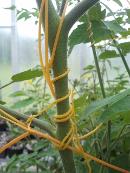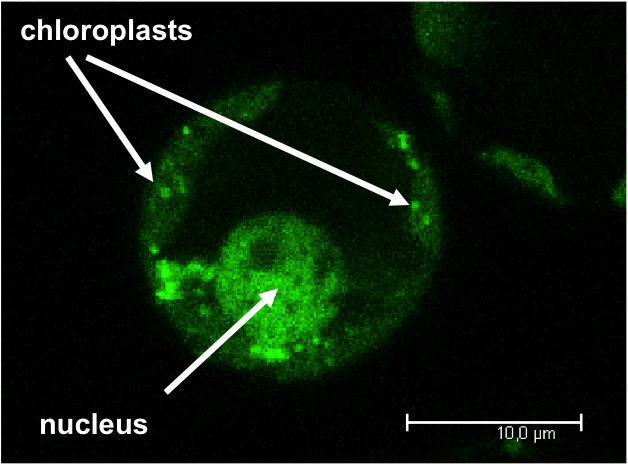Planter og vegetasjon
Foto: VITALIY PAKHNYUSHCHYY/Mostphotos
Kari Anne Bråthen
Professor
Enhet: Institutt for arktisk og marin biologi
Jeg er interessert i planters funksjonalitet i sine økosystemer, spesielt i samspill med herbivorer og hvordan planter i sine samfunn endrer seg med klimaendringene. Jeg er også opptatt av hva som fremmer biodiversitet samt sammenhengen mellom biodiversitet og plante- og økosystemfunksjonalitet. Prosjekter som jeg for tiden er delaktig i er;
MONEC - To manage or not: assessing the benefit of managing ecosystem disservices
COAT - Climate-ecological Observatory for Arctic Tundra
ECOGEN - Ecosystem change and species persistence over time: a genome-based approach

Elisabeth Cooper
Professor
Enhet: Institutt for arktisk og marin biologi

Arve Elvebakk
Professor i botanikk og (fram til 31.12.22) dagleg leiar for Tromsø arktisk-alpine botaniske hage
Enhet: Norges arktiske universitetsmuseum
1. Arktisk botanikk og bioklimatologi
2. Taksonomi blant filtlav (Pannariaceae) i global målestokk
3. Andre prosjekt
For nærare opplysningar om desse, sjå under den engelske versjonen
Kirsten Krause
Professor i Plantemolekylærbiologi
Enhet: Institutt for arktisk og marin biologi
Functional Parasitic Plant Genomics:
Parasitic plant/host plant interactions
 Parasitic plants live as parasites on and from other plants. This creates huge losses in agriculture when a field of crop plants is infected. Knowledge on the biology of these plants is therefore of high importance to combat them, but also to make use of their unusual traits.
Parasitic plants live as parasites on and from other plants. This creates huge losses in agriculture when a field of crop plants is infected. Knowledge on the biology of these plants is therefore of high importance to combat them, but also to make use of their unusual traits.
We have over the last years developed a set of tools for the parasitic plant genus Cuscuta spp. (dodder) that allow us to approach the molecular mechanisms underlying host plant/parasitic plant interactions. These include a sequenced genome (the first parasitic plant genome sequence), gene expression profiles for different species, different developmental stages and different growth conditions, proteomic data, sterile callus and shoot cultures, protocols for transient transfections of cells and an extensive microscpic image database including time lapse videos.
Selected publications:
- Fischer K et al.: Mol. Phylogenet. Evol., DOI: 10.1016/j.ympev.2024.108243, 2024.
- Bawin T et al.: Plant Phys., https://doi.org/10.1093/plphys/kiad505, 2023.
- Zangishei Z. et al.: Plant Phys., https://doi.org/10.1093/plphys/kiac331, 2022.
- Fischer K. et al.: Front. Plant Sci. 12, 641924, 2021.
- Förste F. et al.: Physiol. Plant. 168, 934-947, 2020.
- Olsen S & Krause K: Plant Meth. 15, 88, 2019.
- Vogel A et al.: Nature Commun. 9, 2515, 2018.
Cell wall degrading enzymes from parasitic plants
![]() Parasitic plants use hydrolytic enzymes to break down cell walls of their host plants but are able to protect their own cell walls from enzymatic attack.
Parasitic plants use hydrolytic enzymes to break down cell walls of their host plants but are able to protect their own cell walls from enzymatic attack.
We study the difference between cell wall composition in the parasite Cuscuta and its hosts and analyze the enzymes involved. This knowledge can help to develop novel, more specific enzyme cocktails for plant biomass hydrolysis. In addition, it helps us understand why some plants are not susceptible to the parasite.
Selected publications:
- Olsen S. et al.: Journal of Experimental Botany 67, 695-708, 2016.
- Johnsen H.R., et al.: New Phytologist 207, 805-816, 2015.
-Johnsen H.R. & Krause K: International Journal of Molecular Sciences 15, 2014.
Functional Plant Genomics (FunGen): Arabidopsis thaliana
Integration of plastids into the regulatory network of plant cells
 The genetic information in plant cells is distributed between three compartments (nucleus, plastids and mitochondria). To function properly, these genomes are need to communicate with each other to synchronize their expression.
The genetic information in plant cells is distributed between three compartments (nucleus, plastids and mitochondria). To function properly, these genomes are need to communicate with each other to synchronize their expression.
We are investigating how DNA binding proteins that are targeted within the cell with a special focus on proteins that have functions in the nucleus and in the chloroplasts. We are further interested how this mutual communication between the plant genomes contributes to a fine-tuning and with it a harmonized expression of the genomes.
Selected publications:
- Teubner, M. et al.: Plants 9, 367, 2020.
- Teubner, M. et al.: Plant J. 89, 472-485, 2017.
- Fuss, J. et al.: New Phytologist 200, 1022-1033, 2013.
- Krause, K. & Krupinska, K.: Trends Plant Sci 14, 194-199, 2009.

Lennart Nilsen
Førsteamanuensis
Enhet: Institutt for arktisk og marin biologi
Arktis, Svalbard, fjellvegetasjon, planteøkologi, vegetasjonslære, plantesosiologi, Geografiske informasjonssystem, naturgeografi, satellittbasert miljøinformasjon og overvåkning, kart og kartlegging.